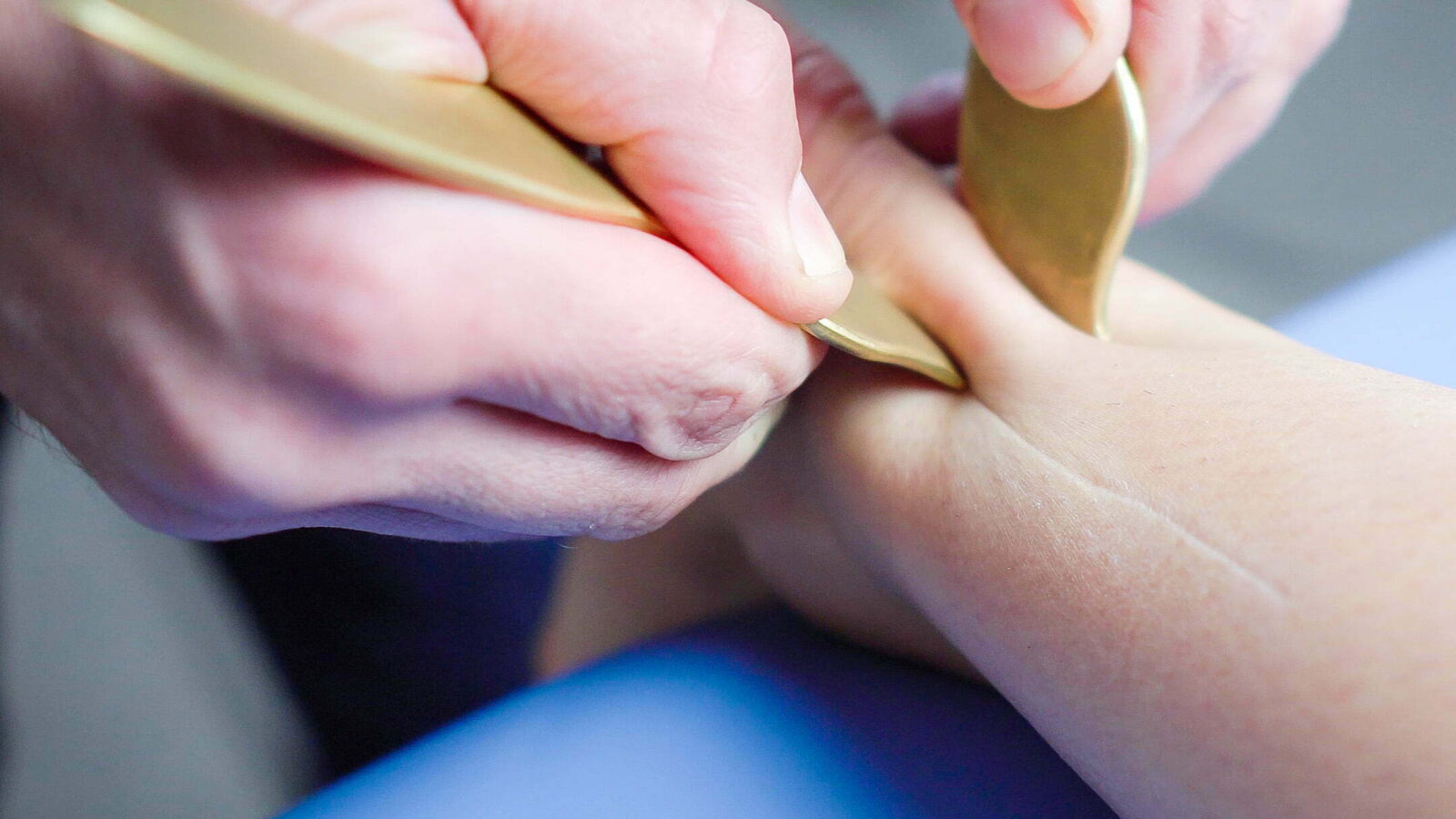The first Regulatory System according to FRSc can be briefly called "mechanical". Its basis is the knowledge of the fascia as a tissue dissipating and concentrated tension in the human body.
Support structures
One of the extraordinary functions and adaptations of the motion system is the constantly changing mechanical loads and the ability to smoothly concentrate and dissipate tensions. This phenomenon is called biotensegrity. Skladowski, meticulously analyzed the anatomy of the human body and came to the conclusion that each tensegrity system, both in the micro and macro scale, apart from the "dispersers" of forces, must also have elements that support and strengthen the entire system. Such places included, among others ligament attachments, transitions of tendons into bone, smooth transitions of the muscle belly into the connective tissue (e.g. the rectus abdominis muscle with its intersections).
Furthermore, research led the creator o FRSc to very specific structures, whose name he took from the art of construction and referred to as collar beams. Collar beams are usually hard, connective tissue structures surrounded by fascia that connect two muscles or individual actons of the same muscle. Most likely, they also play an important role in transferring loads during strenuous muscle work.
Pain and first therapeutic attempts
What can be noted about the First Regulatory System is that its gradual discovery and systematization was very empirical. Składowski already knew the places where potentially the greatest amount of tensions can be accumulated in the locomotor system, as a result he began to wonder if such a place could be "overloaded", which in turn would lead to some kind of functional pathology. It soon turned out that, indeed, such a relationship existed. It concerned primarily of patients who were performing multiple, repetitive movements. During a visit to the office, they usually complained of severe, pinpoint pain. It usually took on a strong stinging character and prevented the performance of a given movement, literally "undercutting" muscle strength.
Palpation of these strongly painful points and correlation of their location with the aforementioned collar beams or tendon/ligament attachments brought a therapeutic solution in the form of strong, point pressure. Sufficiently long compression of the structures not only relieved pain, but also allowed to restore the full, painless range of motion. This procedure, uncomplicated in its methodology, supported by the ability to analyze the patient's pain and search for appropriate structures, became the basis for thinking about the First Regulatory System
Mechanism of action
While making his discoveries, Składowski assumed that the basis for the appearance of such effects among patients is the piezoelectric and reverse piezoelectric phenomena that can be generated in collagen fibers. However, a number of the latest scientific reports make the author of FRSc direct his attention not only to piezoelectricity, but also to phenomena caused by the neurophysiological properties of receptors contained in the fascia, i.e. Golgi tendon apparatus, Pacini and Ruffini bodies, or free nerve endings. A series of reflexes and reactions caused by these receptors in response to strong, point pressure is the basis for todays understanding, developing and teaching the nature of what in FRSc is called the First Regulatory System.
Is this the end?
The continuous development of the FRSc method and the logic leading through the issues of the First Regulatory System provide more and more points showing particularly strong activity under the influence of constant pressure. This extends to both diagnostic and therapeutic possibilities. At the same time, we are witnessing a very dynamic growth of scientific knowledge and research on the fascia, its functions and properties. This allows for an even more precise description of the phenomena that Składowski, his assistants and students have the opportunity to observe among patients in both office and clinical conditions.

Krzysztof Skibiński
Physiotherapist, conducting training in Pinotherapy and Manual Medicine according to FRSc. Apart from leading courses alongside the FRSc founder, he is also involved in coordinating research and scientific projects within the EBM stream. Read more...





